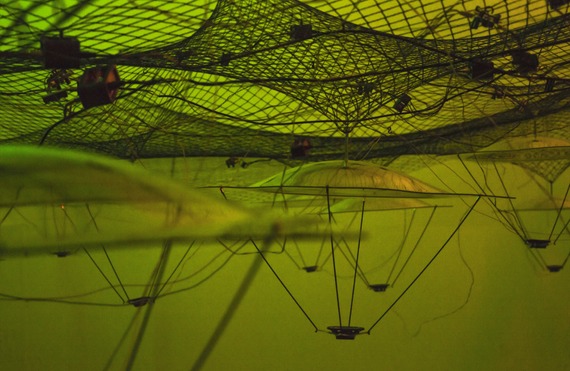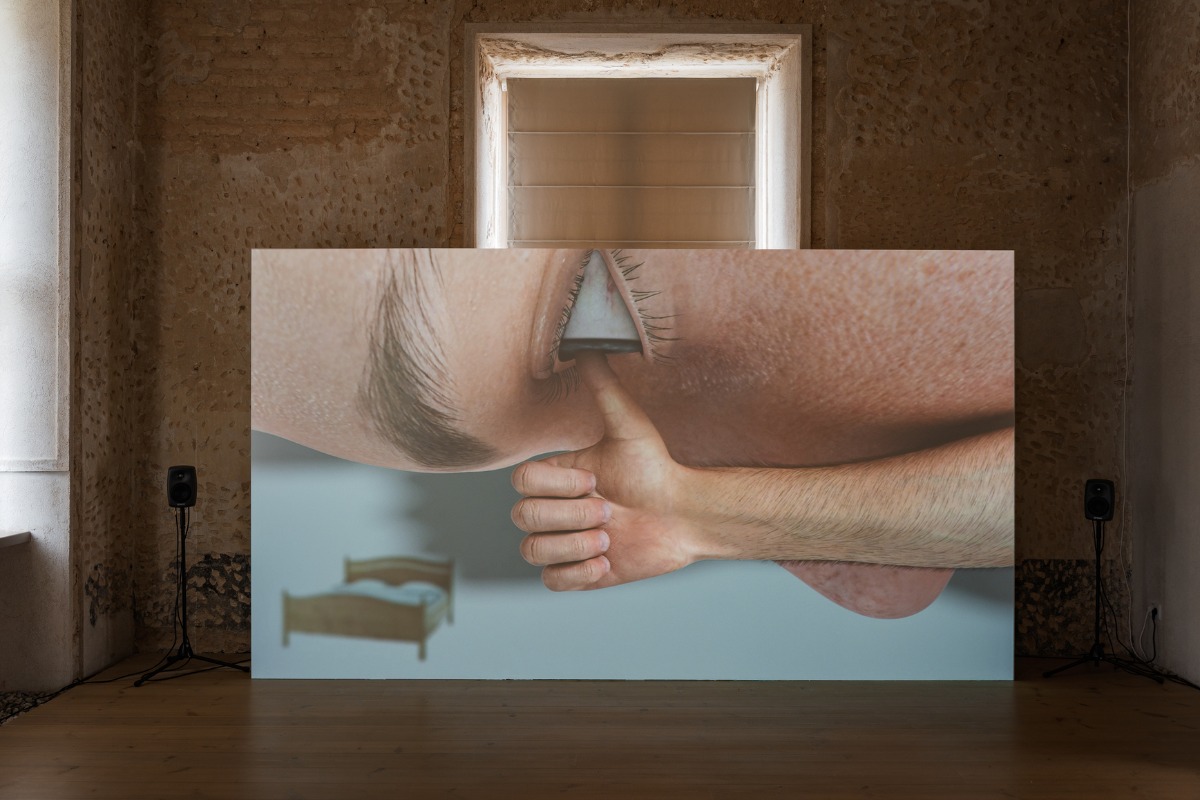
What to See in the Baltics
Must-see art exhibitions in November-December, 2025
The year 2025 is drawing to a close. The largest festivals and biennials have already taken place or are coming to an end, yet exhibitions continue to put forth their utmost creative efforts to captivate audiences, who now have more time to fully appreciate them. So, what do we recommend not to miss in 2025 across all three Baltic countries?
ESTONIA, Tallinn
Kumu Art Museum
Otto Dix (1891–1969). Longing. Self-Portrait. 1918/1919. Oil on canvas. © Albertinum, Staatliche Kunstsammlungen Dresden. Photo: Hans-Peter Klut. © VG Bild-Kunst, Bonn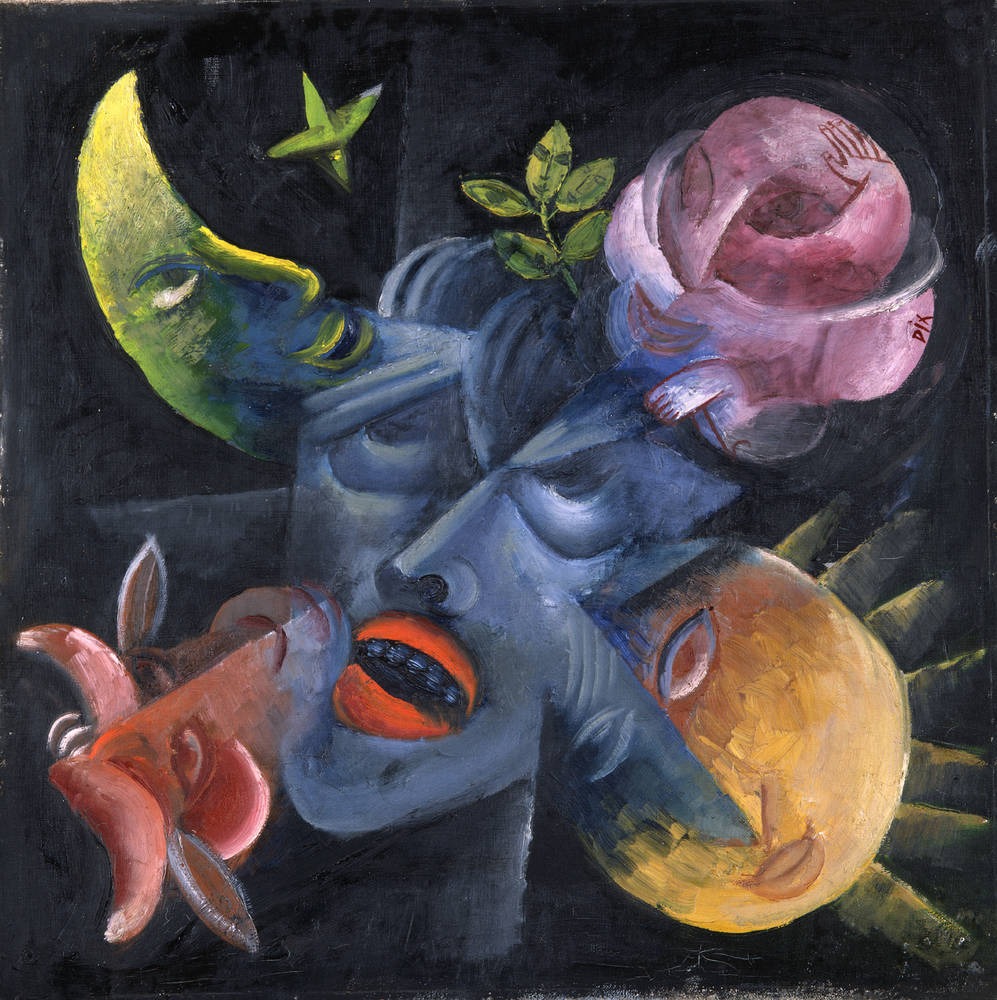
Spiegel im Spiegel: Encounters Between Estonian and German Art from Lucas Cranach to Arvo Pärt and Gerhard Richter
Until 12 April
The exhibition Spiegel im Spiegel is an ambitious cooperation project between the Art Museum of Estonia and the Dresden State Art Collections (Staatliche Kunstsammlumngen Dresden, SKD), taking the viewer on a journey through Estonian and German art and history. While reflecting the complexity of those relations and issues of colonial power and mentality, the exhibition also highlights the cultural intertwining of German, Baltic-German and Estonian art.
The exhibition sets up encounters between the oeuvres of Arvo Pärt and Gerhard Richter, August Matthias Hagen and Caspar David Friedrich, Eduard Wiiralt and Otto Dix, Konrad Mägi and Max Pechstein, Ülo Sooster and Joseph Beuys, and many other outstanding Estonians and Germans.
Mari Kurismaa, In the Silence. 1988. Art Museum of Estonia
Mari Kurismaa. Twilight Geometry
Until 22 February
The exhibition presents the works of the artist and interior architect Mari Kurismaa (1956) from the late 1970s to the early 2000s. Showcasing the diversity of her creative practice, the display includes paintings, drawings and photographs, along with slide installations, carpet designs and architectural drawings. The different genres and media provide unique insight into her work, revealing her characteristic playfulness in exploring the world around us and uncovering its many layers.
Having graduated in 1979 from the State Art Institute of the Estonian SSR as a furniture and interior designer, Kurismaa’s oeuvre brings together several strands of 20th-century European art: conceptualism, surrealism and metaphysical painting, with references to antiquity and postmodern architectural thought. Her art has been shaped both by the classicist urban space of Tartu and the Baltic-German manor culture, and her works often enter into dialogue with historical forms and layers of cultural memory. Geometry plays a central role in Kurismaa’s work. Yet for the artist it is less a system of order than a poetic language shaped by humanistic ideals. Geometry, the golden ratio and symmetry appear not as compositional devices but as perceptual tools. The exhibition title Twilight Geometry also points to this rethinking of geometry: her paintings unfold in twilight, that moment of transition where boundaries blur and new meanings can gradually emerge.
Kai Art Centre
Sirje Runge. Landscape XXII, 1982, 90x100cm, oil on canvas, Art Museum of Estonia painting collection
On Fragile Grounds. Sirje Runge and Light
Until 22 February
The exhibition is part of the main program of Tallinn Photomonth 2025 contemporary art biennial and it traces Sirje Runge’s engagement with light, color and perception. Best known for her paintings, Runge has worked across media including painting, video, and decades of teaching. Central to her practice is the concept of värviruum, or color space: a living field where light, emotion, and structure interact. For Runge, teaching and making are fundamentally intertwined. Teaching being an art form of its own, grounded in attention and experimentation. Light, too, is not only a material phenomenon, but her greatest collaborator. The exhibition will present a selection of works by Runge ranging from the 1970s to the present day. It will also feature a room dedicated to Runge’s teaching, reconstructing her experimental work with colored papers for exploring light.
A leading figure in Estonian postwar art, Runge is a seeker whose practice unfolds as a luminous inquiry into light, color, and matter. She approaches color as vibration and pedagogy as artistic practice. Centering fragility as both a conceptual and material lens, this exhibition invites viewers to inhabit the liminal space of matter and thought, light and shadow, creation and dissolution. Runge reminds us that the force of art often lies in its ability to hold contradictions, embrace impermanence, and transmute the fleeting into something enduring.
Tallinn Art Hall
Alexei Gordin. This Land is Your Land
Until 11 January
Alexei Gordin’s self-fashioned, forthrightly stated artist persona is grounded above all in his painting – a practice steeped in grotesque, tongue-in-cheek critique. To give a fuller sense of his sensibility, we present a selection of his numerous social media posts, where phone snapshots and video clips open onto worlds filled with harmony, beauty, and balance.
It is no coincidence that we focus on Alexei’s Instagram Stories – the phone photos made by millions today, appearing and vanishing in a constant stream, accessible to all, with no museum ticket or gallery rental fee. Among his thousands of snaps, which capture the decorous and the less decorous moments of everyday life, one finds images of surprising beauty. Taken by someone with a trained eye and a ready sense of wonder, they are mostly landscapes and cityscapes, shot locally and on the road. If we set aside the graffiti that accompanies the memory, decay, and dereliction of human-made buildings and interiors, there is little grotesque or irony here; instead, there is the beauty of colour, light, and form – an aesthetic neither singled out by critics nor emphasised by the artist himself. Without seeking to stake a claim in the art world, these snapshots teach us to love the life we too easily lose sight of while busy criticising ourselves and others.
Jass Kaselaan, Art Allmägi. Equestrian Monument Model. 2021. With permission from the authors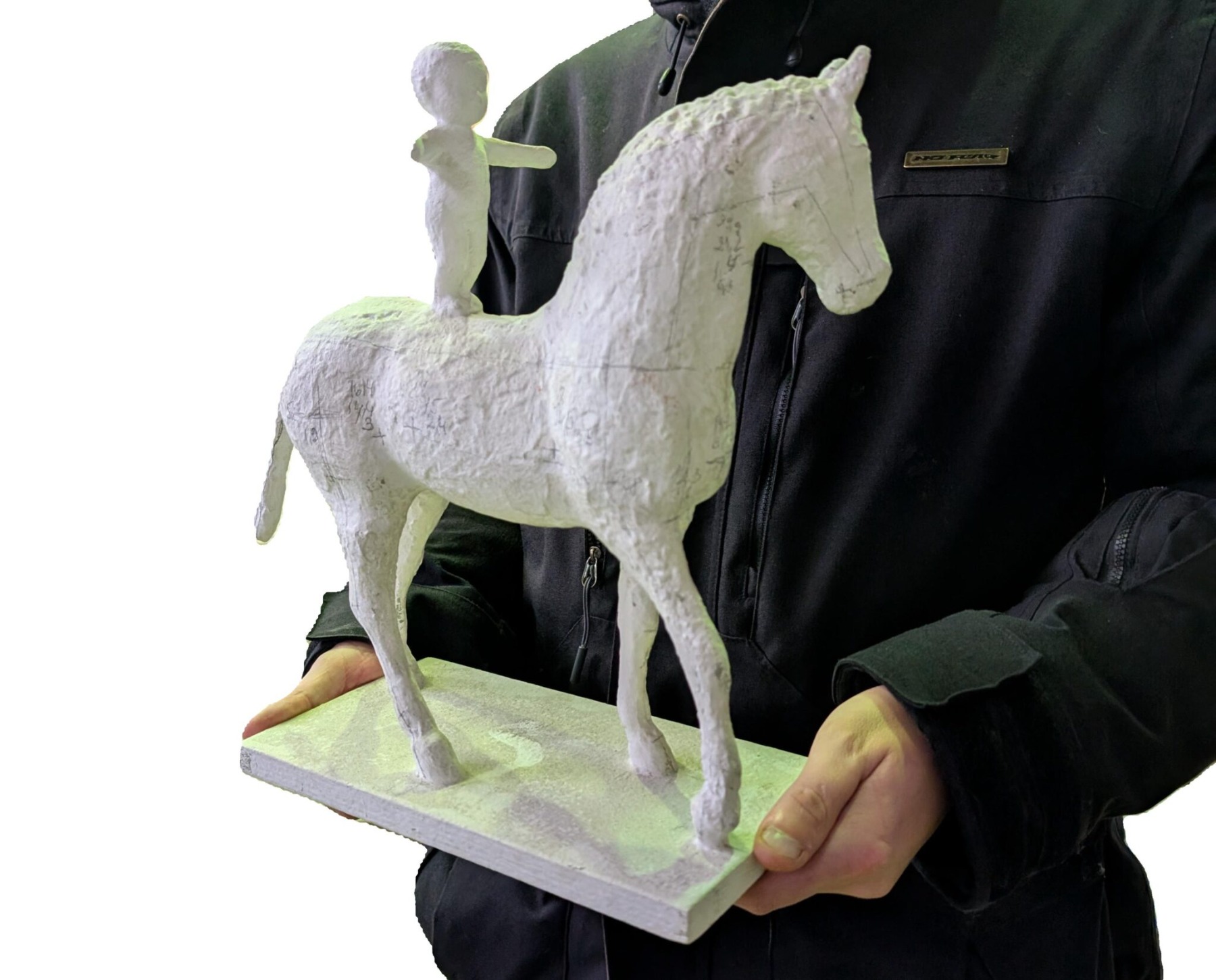
Plenty of Room to Grow!
6 December – 1 March
“Keep growing! There’s plenty of room to grow!” said the Wolf to Little Red Riding Hood, the Witch to Hansel and Gretel, and the Great Commander to the small boy and girl, knowing that tomorrow, one would bear arms while the other would raise the next generation. “Keep growing, ” said the parents to their beloved child, as did the insistent, non-negotiable voice within the child himself, driving them higher, farther, deeper – perhaps even away. Away from here, away from others, away from themselves. „Mental health and fragments” rather than “balance, ” tend to be the keywords in describing contemporary life and creativity. This exhibition is about process of growth and it seeks to distill the particles of movement, the crumbs of transformation, as much as a visual form can express. It does so with the contributions of Ene-Liis Semper, Anita Kremm, Kristel Zimmer, Liisamari Viik, Jass Kaselaan and Art Allmäe, Eero Alev, Tõnis Saadoja, Terje Ojaver, and Kiwa.
Fotografiska
Ergol #2, S1B clean room, Arianespace, Guiana Space Center [CGS], Kourou, French Guiana, 2011 © Vincent Fournier
SPACE – A Visual Journey
Until 11 January
The universe is a never-ending source of fascination, inspiration and big questions. The exhibition SPACE – A Visual Journeyexplores the celestial frontier where artistic expression and scientific inquiry meet, and captures the grandeur of the cosmos through the eyes of astronomers and the interpretive visions of artists alike.
Through works by 14 different artists, we encounter questions like who we are in the face of eternity and when we leave our planet behind, what values we bring with us when we discover new worlds, and who has the right to dream about a future outside of Earth’s atmosphere.
Mikkel Museum
Vytautas Kasiulis (1918–1995). Horse Races. 1963. Oil. M. K. Čiurlionis National Museum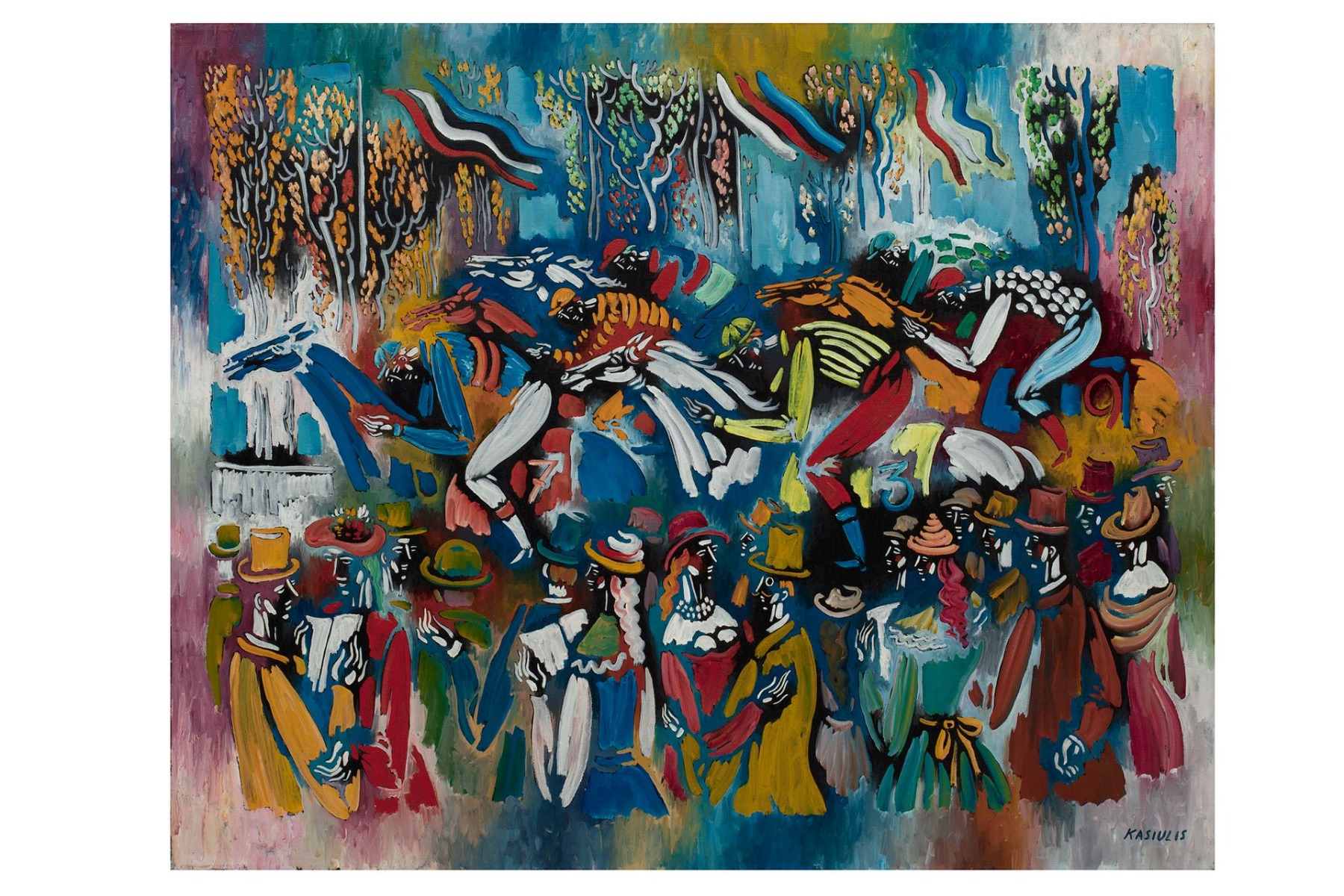
The Pledge of Freedom: The Art Collection of Mykolas Žilinskas exhibition
Until 8 March
Nearly 45 years of active art collecting brought over 1,600 works of art to the collection of Mykolas Žilinskas (1904–1992). By creating this collection and transferring it to his native country between 1968 and 1988, Žilinskas, who had fled his homeland in 1940 and lived in exile in West Berlin until the end of his life, was supporting and strengthening the national spirit and prosperity of Lithuania. “I live to prove what one Lithuanian can do if he loves Lithuania very much,” Žilinskas said about his philanthropy and social activism. In Kaunas, as part of the M. K. Čiurlionis National Museum of Art, a separate gallery is dedicated to his collection.
According to the exhibition curator, Kerttu Männiste, Žilinskas collected passionately and extensively, guided by his own taste and intuition, and approached art acquisition with the same risk-taking courage as he did business. The result was a diverse collection that includes paintings by European Old Masters, copies of famous works of art, works of German and French realism and modernism, works by amateur artists, works by little known women artists, and works by Lithuanian authors.
Temnikova & Kasela gallery
Quistrebert Brothers. Firescape. 2020
Quistrebert Brothers and Sirja-Liisa Eelma. Zoom
Until 17 January
Both artists present new works that continue earlier lines in their oeuvre, establishing a dialogue between similarities without amplifying or deliberately aligning them. A key role here is played by the semantic potential of geometric structures – their capacity to reflect on the history and present of their artistic medium while also, like a traditional ornament, encoding essential processes through minimal means. Equally engaging is the combinatorial method that brings together a limited number of elements in various arrangements, avoiding visual overproduction and resisting today’s flood of information, while introducing a meditative and hypnotic dimension to the art experience. In this way, the artists have created open forms that are subject to many different interpretations.
Continuing her exploration of painting as a mirror, Eelma engages with the paradox that “a mirror is not an image, yet the image lies upon its surface”. The central motif of her paintings may be a mirror, a window, or a painting within a painting – a suggestion of another possible image, a potential elegantly and deliberately left open by the artist. It is not a single image, and yet it encompasses all the images that might one day appear there. The subtle variation of colour tones produces a curious optical illusion: the juxtaposition of differently hued surfaces creates a mirror-like glow. As architectural elements, the frames mirror the contours of the painted image, recalling hymn boards or Gothic tabernacles and transforming Eelma’s display into a cohesive installation. The Quistreberts’ four-part work invites reflection on the spatial illusions of portrait painting and op art; the mystical dimensions of light and shadow, colour and geometry; and the symbolism of the number four – from the tricksterish card soldier to the blessed evangelist, and from cosmology and alchemy to anthroposophy.
Contemporary Art Museum of Estonia (EKKM)

The Young Contemporary Art Association (ENKKL). Together, We’re Warmer
15 November – 14 December
The 19th season of the Contemporary Art Museum of Estonia (EKKM) will conclude with a group exhibition by The Young Contemporary Art Association (ENKKL) entitled “Together, We’re Warmer” which explores various aspects of working, being, and sticking together in both content and form. As part of the exhibition, which opens on November 14, the museum will be entrusted for a month to 31 young artists, who will take over EKKM’s exhibition spaces, public program, communication channels, and facade.
The large-scale exhibition, organized jointly, will be opened with a press conference. During the exhibition, performative tours, a cultural policy debate, a workshop on amendments to Tallinn’s coalition agreement, a Love Cabinet party for all disillusioned singles, a reading group, and a quiz will take place. The collective, who has been compared to the literary group Young Estonia group from the beginning of the 20th century, aims to dismantle the museum walls together with its institutional constraints, heal wounds and fill the seasonally depressed hearts with light and warmth. The artist-run-do-it-yourself project space takes on a whole new dimension. Unique artistic experiences guaranteed.
Tütar gallery

Tõnis Saadoja. Present Continuous
Until 7 December
Tõnis Saadoja’s previous exhibitions have focused on the mediation and compression of memory and light perception: how to concentrate, through multiple filters, the lights within our memory. The artist’s latest exhibition, ‘The Enduring Present’, continues in a way to examine the themes of light and time, but also executes an experimental about-face. This series is painted en plein air, meaning outdoors, in the open air, with the completion of each work being limited by the changeability of natural light within a two-hour period. As such, these paintings explore how long a moment lasts and what a single lasting moment can equate to on the canvas. In a certain sense, they are a documenting of the work of a performative artist, but in another – and more important – sense, they are a meditation on what the present means and how long it lasts; in other words, when the present is done.
The proposition: a relatively small canvas, oil paints, an eye that looks for and finds a view of some kind and compares the colours found in nature with those on the canvas, the view itself being a composition of tree branches, tree trunks, roadsides, light – and time. What is to be achieved with all this is for that which is visible to the eye to remain on the canvas as a translation with a certain credibility. The painting renders a present moment; a specific moment of light. This means that the time in which to paint is limited due to the light changing. It is limited to the present: there can be no painting the past or leaving the painting’s completion to the future.
Punctum Gallerii
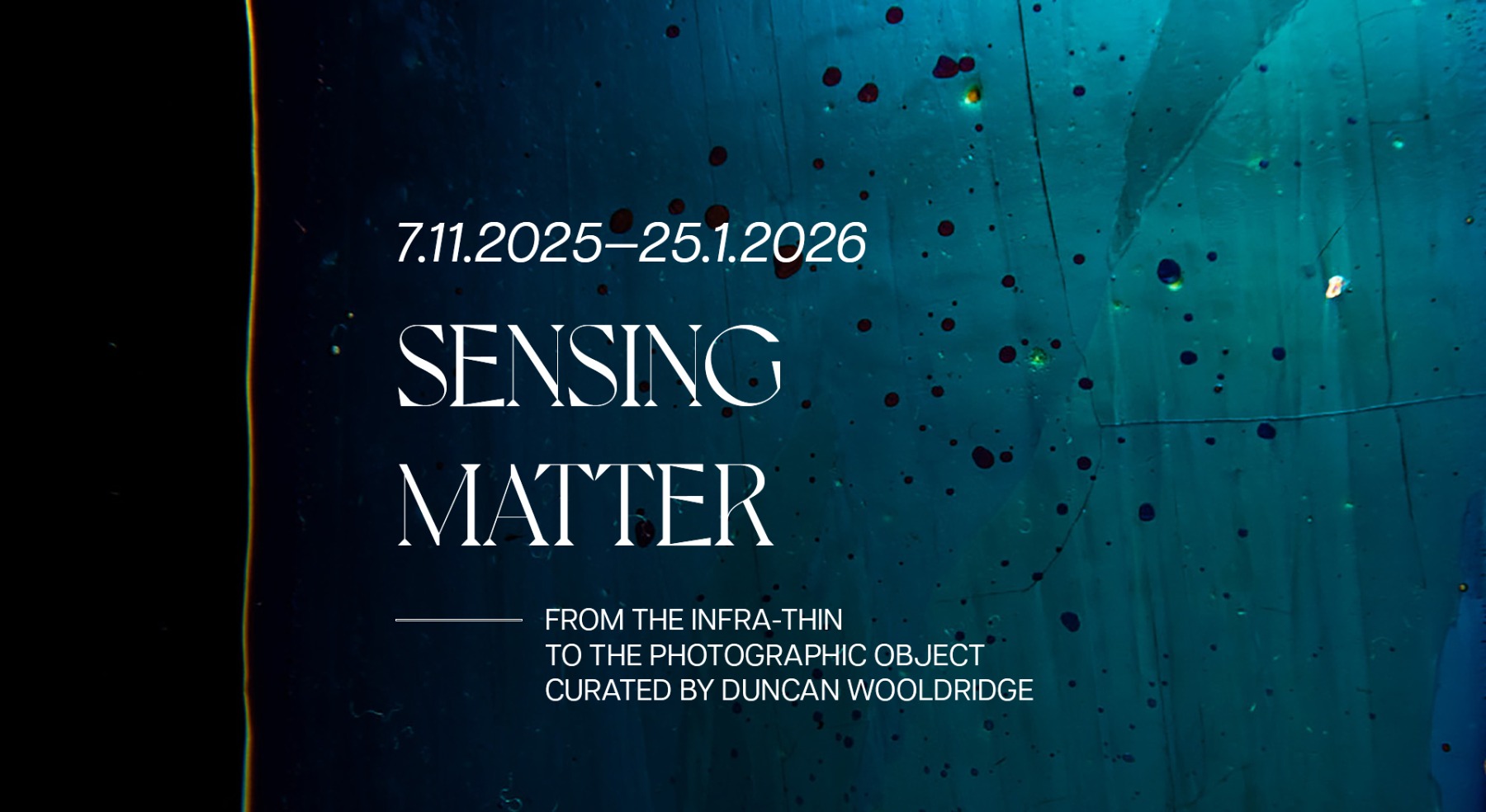
Sensing Matter: From the Infra-thin to the Photographic Object
Until 25 January
Punctum Gallerii is pleased to announce the group exhibition Sensing Matter: From the Infra-thin to the Photographic Object, curated by artist and writer Duncan Wooldridge (lives and works Manchester, UK). The exhibition includes work by eleven artists: Kristine Krauze-Slucka, Reinis Lismanis, Agata Madejska, Suzanne Mooney, Hanako Murakami, Juuso Noronkoski, Xanath Ramo, Alnis Stakle, Eva Stenram, Ryudai Takano, and Laure Winants.
Sensing Matter presents a selection of works examining photographic materiality and objecthood. The exhibition asks a simple question – at what point might a photograph become visible as a thing? – and develops from it a study in perception and encounter. Moving from barely visible vapours and light sensitivities – which might not appear as images at all – towards sculpture and installation, which seem to take the photograph away from the wall to encroach into physical space. The exhibition studies the matter and gestures of the photographic image, many of which are usually hidden out of view. Spanning moments of invention and production, to the transformations and afterlives of images, the exhibition brings into view subtle qualities and characteristics that photographs, in their familiarity, usually conceal: an apparition-like sense of possibility, and an ongoing potential found in the residue.
ESTONIA, Tartu
Kogo gallery
Series Parts Of Me, Not, 2025 by Maria Kapajeva. View from the artist’s solo exhibition By Losing Them, I Become a Whole. Kogo Gallery, 2025. Photo by Marje Eelma
Maria Kapajeva. By Losing Them, I Become a Whole
Until 22 November
Working across photography, video, textiles, ceramics and found objects, the exhibition is at once a case study, a therapeutic process, a tribute to Kapajeva’s grandmother, a farewell to her breasts and ovaries, and an ode to the body she now inhabits. By weaving together physical, visceral and psychological experiences, the artist has created a roadmap for navigating a transitional state of being – learning to mourn, care for and celebrate the body’s evolving form. What begins as a profoundly intimate story opens into a collective experience – one that looks toward a future filled with diverse voices and bodies, sharing stories, raising awareness, and celebrating new ways of being and becoming.
In the framework of the exhibition, artist Maria Kapajeva engages women with BRCA1/2 mutations or breast cancer and hosts a queer community gathering to expand her two new works. More info can be found on the gallery’s website.
LATVIA, Riga
Latvian National Museum of Art
Džemma Skulme. Folk Song. 1969. Oil on canvas. Collection of the Latvian National Museum of Art, Riga. Photo: Normunds Brasliņš
Džemma
Until 25 January
The artist Džemma Skulme (1925–2019) both in her painting and personal conviction about the role of culture in a broader context, was always guided by the measure of human basic values – a spiritual vertical rooted in the heritage of folk culture.
The goal of this exhibition is not only to explore the situation of art and society in Soviet-occupied Latvia through the creative contribution of a single author but, more crucially, to highlight the individual will of the artist’s personality to speak about what was essential to both herself and her people despite ideological constraints. Džemma Skulme’s art is a testament to how, under conditions of censorship, she gradually liberated herself from the state-imposed Socialist Realist expression, including ideological pathos, through expressive painting language. The artist’s personality and public stance have undeniably had a significant impact in Latvia both during the Soviet occupation and after the restoration of Latvia’s independence. As the Head of the Artists’ Union of Latvia (1982–1992), she actively participated in the National Awakening movement and, in the turbulence of political times, playing a direct role in the country’s fight for independence.
Riga Contemporary Art Space

Leonards Laganovskis. Clean Cut
Until 11 January
The Clean Cut solo exhibition by Leonards Laganovskis comprises works from the last two years alongside art recognised as canonical in Latvian art history and exemplified by Clean Cut, a painting that came to be viewed as one of the symbols for the end of an era at the turn of the 1980s and 1990s.
As a conceptualist, Leonards Laganovskis spurns visual depiction of the reality or subjects it to a systemic reading of ideas. And yet Laganovskis’ body of work defies consolidation into a single whole; his art is too multi-layered for that, defined by profound intellectual structures encompassed by irony, and imagery in equal measure. This has prompted art critics to widen the theoretical boundaries and refer to poetic or ironic conceptualism. Certainly, Laganovskis’ way of thought has been informed by countless works by postmodern philosophers; however, the artist approaches any theory with a dose of irony, as if suspecting that it will be replaced by a new one before long.
Rihards Vītols. Ecotopia
14 November – 11 January
Rihards Vītols’ exhibition will present works created over the past ten years, tracing a creative journey where observations of nature intertwine with technological exploration and speculative future scenarios. Using sound, video, digital media and objects, Vītols examines the fragile and often contradictory relationship between the civilization and the biological systems on which humanity depends.
The exhibition invites viewers into a space of reflection, where the future is not portrayed through dystopian visions, but through an intimate engagement with the fragility of the present – revealing its deeper potential. Artist Rihards Vītols investigates the environmental impact of the Anthropocene, creating works that reflect on the interplay between nature, environment and technology. His artistic process incorporates scientific methodologies, exploring concepts through experimentation. Using self-made speculative devices, he transforms the data and visualizations generated by these experiments into artifacts, objects, and multimedia artworks.
Kim? Contemporary Art Centre
The RIXC “Plants Intelligence” exhibition in the Kim? Contemporary Art Centre. Photo: Kristīne Madjare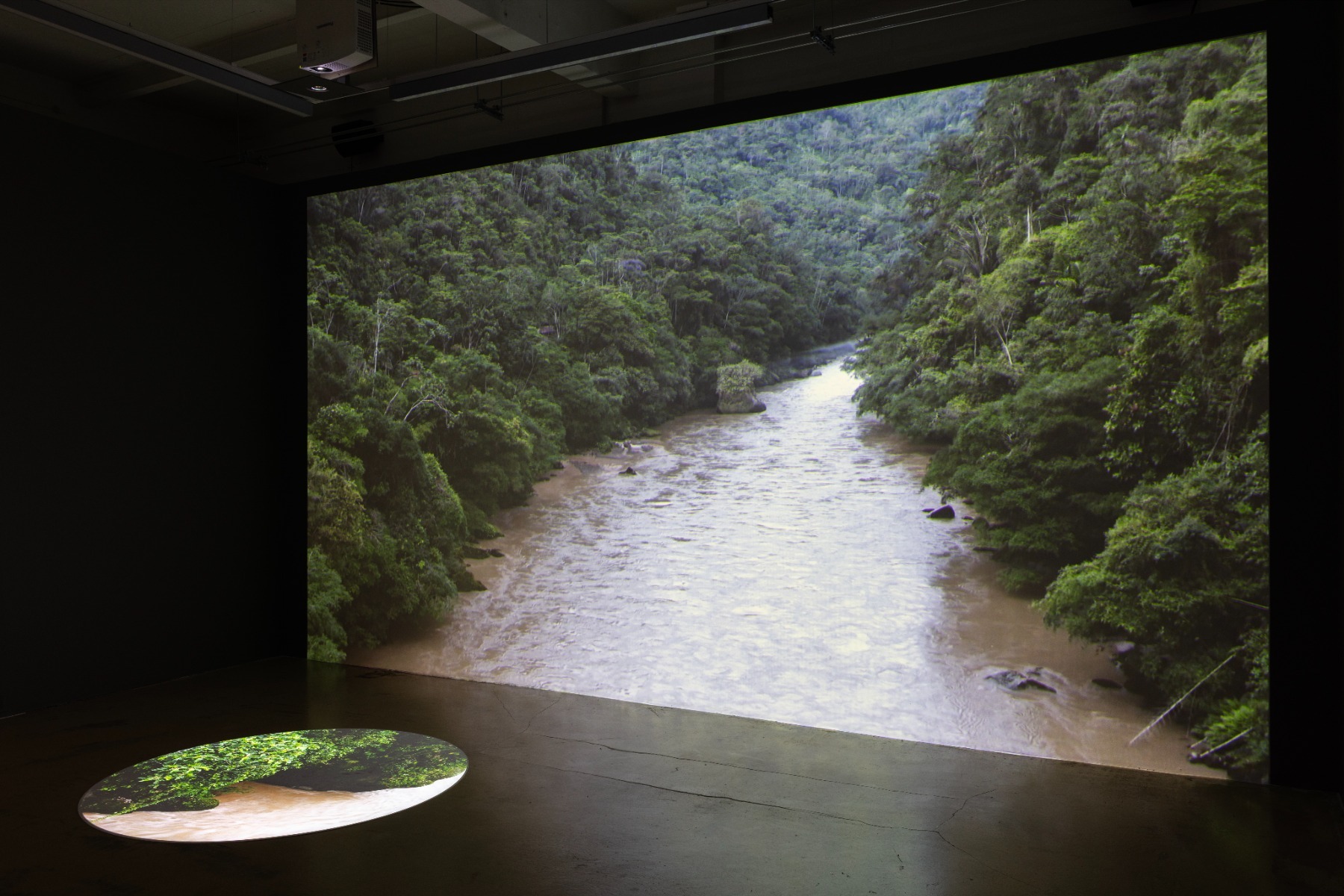
RIXC Art and Science Festival 2025: Plants Intelligence
Until 23 November
This year, Riga-based RIXC Center for New Media Culture celebrates its 25th anniversary. Since its founding, local collaboration and international networking have been at the heart of RIXC’s development. In this spirit, the 2025 festival is created together with key partners from Latvia, the Baltic-Nordic region, Europe, and world-wide.
Over the years, RIXC has gradually developed a discourse of techno-ecologies at the intersection of art, science, and technology, exploring topics such as renewable futures, ungreening greenness, ecodata, post-sensorium, crypto art and climate, and symbiotic realities. This year’s leading theme, Plants Intelligence, is shaped in close collaboration with RIXC’s distinguished partners — the Basel-based research team of the Swiss National Science Foundation (SNSF)-funded project Plants_Intelligence. Learning Like a Plant, which over the past four years has investigated how plant evolution and vegetal intelligence can inspire new methods, knowledge, and aesthetic approaches in both lifestyle change and the arts. Their research findings — spanning Indigenous knowledge and ethnobotany, critiques of extractive agriculture, experiments in organic breeding, and explorations of how plants sense, adapt, and relate to light and atmosphere — provide the theoretical basis for RIXC’s anniversary festival edition.
Zuzeum Art Centre

The Whole World a Bauhaus
10 October – 28 December
The reception the Bauhaus has become both a celebrated and yet controversial symbol of modern design and avant-garde approaches to life. Although the school was only in existence from 1919 to 1933 at different locations (Weimar, Dessau, Berlin), it has a unique standing as an exemplary representative of a modernist new start. In these years, only around 1,300 students trained at the Bauhaus – how did this school achieve such a remarkable influence, as the epitome of radical renewal in society, in design and in teaching? What makes the Bauhaus so special? Why are its products still made today? The exhibition title, The Whole World a Bauhaus, taken from Bauhaus student and teacher Fritz Kuhr (1928), is in many ways programmatic. It alludes to the fact that the Bauhaus redefined the parameters of art, the crafts, and technology, when Walter Gropius declared the aim of design to include the whole spectrum of design and also social practice in every sense. The exhibition title also refers to the fact that this is a touring exhibition which will address connections and look at the role of modernism at different venues, where it will serve as a platform for learning.
“The Whole World a Bauhaus” is divided into eight different chapters, each focusing on an aspect of work and life at the Bauhaus between 1919 and 1933.
Māksla XO Gallery
Fair Copy. 2025, paper cut-out, acrylic, 80x160 cm
Maija Kurševa. Fair Copy
Until 6 December
For Maija Kurševa, drawing has always been at the bedrock of the artist’s ideas, and it also functions as the method of taking notes of thoughts that pop up on a daily basis. In her new exhibition “Fair Copy”, the artist continues to develop ideas of abstraction and spatial drawing, creating collages of paper cut-outs and acrylic brushstrokes. The exhibition is structured in three notional parts: black lines and white surfaces emphasising black-and-white contrast and abstraction; collages of coloured planes highlighting the power of primary colours and the spatial interplay of negative forms that reveal the presence of absence; and a small retrospective glance at the origins of the artist’s formal methods, with drawings that affirm the enduring significance of this medium in her practice. Maija Kurševa’s aesthetic choice is a striving for purity, order, and clarity – qualities that resonate with Gilles Deleuze and Félix Guattari’s notion of artistic practice as a strategy for confronting chaos. Her works are graphic, beautiful, and meticulously executed gestures, open to interpretation. The formal methods she employs invite the viewer to an affective perception, free from literary overlays.
For Maija Kurševa, the economy of visual means and the interplay between the elements that constitute her works are of fundamental importance. She pays particular attention to the agency of materials and to the basic components of graphic art: the point, the line, the plane, space, and movement. Equally essential is the principle of self-reference, formed through the internal logic of formal techniques – drawings curved by gravity or representing it, and the use of positive and negative forms.
TUR. Contemporary Space for Art
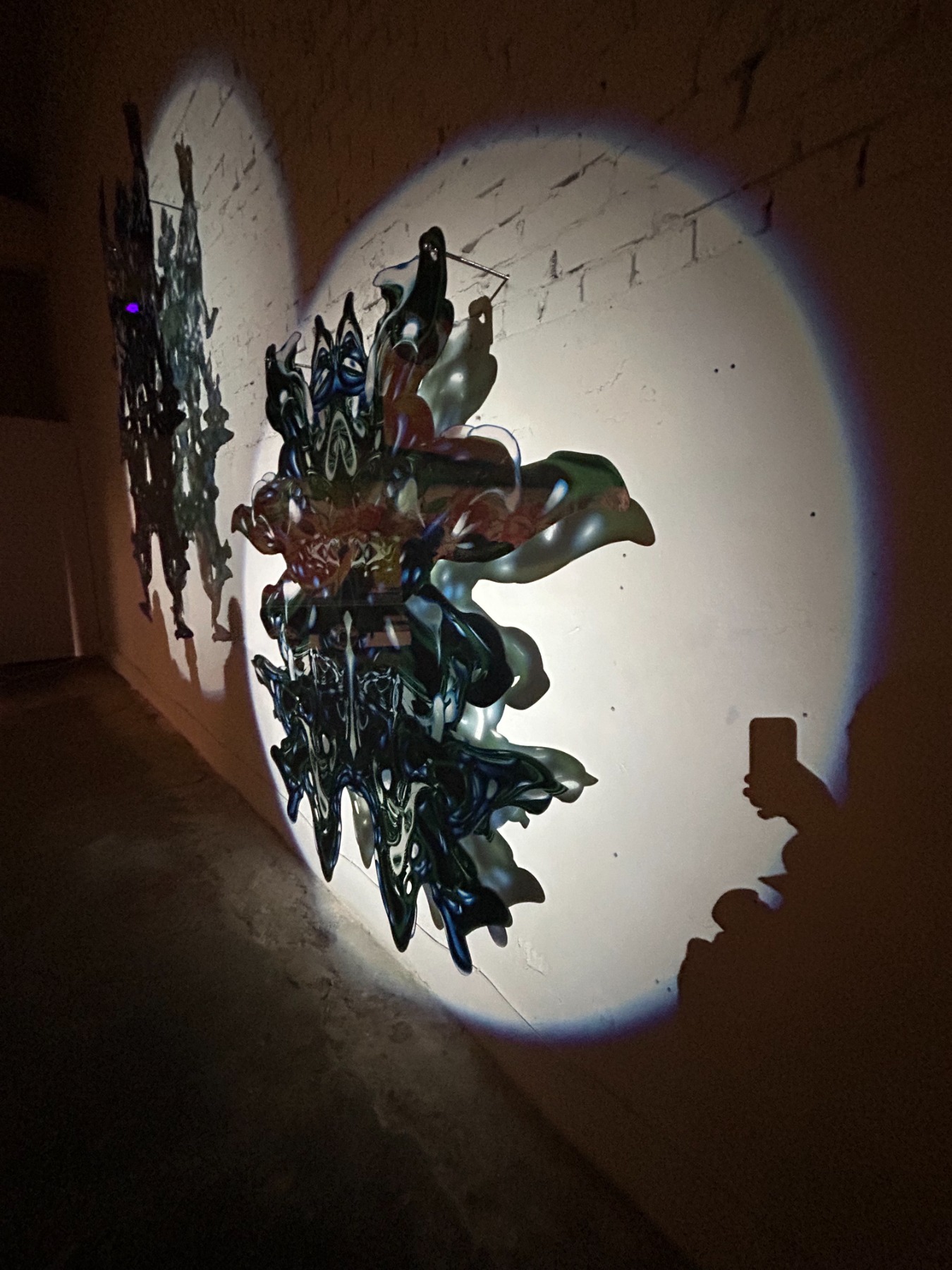
Agate Tūna, Agnieszka Polska, Līga Spunde and Eric Giraudet de Boudemange. Under the Sun
Until 29 November
“Under the Sun” presents the work of four artists: Agate Tūna, Agnieszka Polska, Līga Spunde and Eric Giraudet de Boudemange. They were invited for the distinct ways their practices engage with the conditions of contemporary life: how we make sense of the world around us, and how we navigate our place within it. In “Under the Sun” their works explore how we respond to a time shaped by ecological collapse, war on our borders, rising political unease, technological saturation, and a longing for spiritual grounding. The artists are united by a shared attentiveness to the emotional and ethical dimensions of contemporary life, even as their methods and materials diverge. Within the exhibition, their visions come together as an extended layer of perspective that shifts between planetary, psychological, and metaphysical realms, a constellation made up of distinct sensibilities that overlap and diverge. Together, they invite the viewer to reflect not only on what we see, but on how we respond and what forces shape our capacity to remain present, perceptive, and responsive in this liminal time.
In collaboration with 1646, The Hague.
Galerija ASNI

Marija Žukas. Mother of pearl
Until 20 December
Benediktas Marija Žukas (b. 1992, Vilnius), a Lithuanian painter representing a new wave of abstraction, engages with process-based painting and the affective potential of color, form, and materiality. Žukas’ works reveal a dynamic interplay between gesture and geography, alive with movement, tension, and an unselfconscious sense of wonder. Žukas holds Master’s degree in painting from Vilnius Academy of Arts and has exhibited his work in solo exhibitions in Antwerp (Conscience 20 and Gert Voorjans galleries) and Vilnius (Contemporary Art Gallery Meduza and Vladas Vildžiūnas Art Gallery), as well as in group exhibitions in Lithuania and Belgium. This marks artists first exhibition in Latvia.
LATVIA, Daugavpils
Rothko Museum
Holger Dempwolff. Mr. Smith walking on the seaground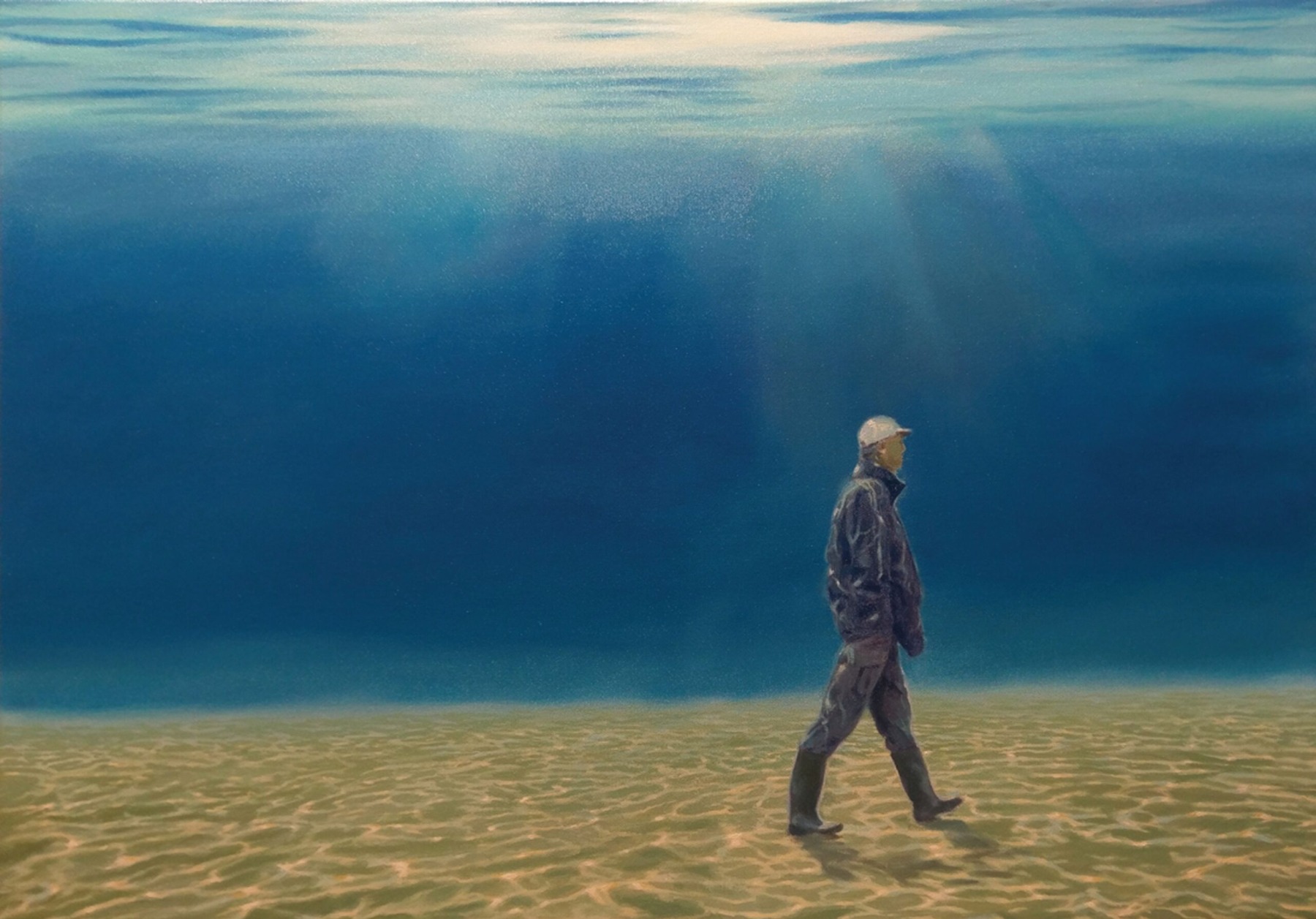
Tensions and Transitions
5 December - 8 February
“Tensions and Transitions” brings together Zhang Dawo, Peter Backhaus, Horst Wagner, Fant Wenger, Reinhard Hanke, Holger Dempwolff, Sonia Parchet, and Anna van den Hövel – eight artists whose works reflect the profound emotional, psychological, and spiritual transitions of human existence in a rapidly transforming world. Through a dynamic blend of abstraction, expressionism, and spirituality, the exhibition explores the boundaries between personal and collective identity, inviting viewers to engage with the complex nature of transformation.
At the heart of the exhibition lies the exploration of transformation and the tensions between the personal and universal. The artists rely on unique artistic lenses to reflect on the struggles of modern existence – alienation, the search for meaning, and the quest for connection. Zhang Dawo’s calligraphic abstraction, Parchet’s spiritual mandalas, and Backhaus’s archetypical expressionism are among the diverse approaches that guide this dialogue. Though their methods differ, these artists share a common exploration of the human condition, navigating the boundaries between the inner and outer worlds. “Tensions and Transitions” offers an immersive journey into the complexities of identity, transformation, and spiritual growth. As viewers engage with the works, they are encouraged to reflect on their own transitions and the boundaries that shape their existence.
LATVIA, Madona
MABOCA gallery

Aksels Bruks, Irem Gungez un Julia Nusser. What Is Lost Is Lost Forever
15 November - 1 December
third time’s the charm. number 3 is a deeply interpreted digit in everyday life. conflicts are made through number 3. numbers 2 and 1 exist through it. 3 brings out opposition through its position. therefore it has the potention to channel other oppositions as well as similarities, as it contains 1 and 2. a group is created by 3 which includes unity, harmony and solidarity within conflict, rejection and dissonance. this group can reflect a lot on the difficulties of being together and having different impacts. as number 3 has idiomatic qualities in situations like trying harder, suffering and melancholy. besides, it brings out hope, good luck and strength. in third time’s the charm, number 3 exists as interpreted and manipulated into romanticizing its content. the arguments as betrayal, pain and discouragment are framed within the joy and satisfaction. it focuses on the pleasure of hassle. those oppositons don’t exist without each other. to be able to talk about the vulnarablity of number 3, one needs a safe ground which is embodied with building materials as wooden, glass and metal plates and elements. the work is circulating various connotations of number 3 s it smybolized in different contexts of everyday life.
Participating artists are Aksels Bruks (LV/CH) Irem Gungez (CH/TR) and Julia Nusser (CH/DE)
LITHUANIA, Vilnius
Contemporary Art Centre (CAC)
Peter Wächtler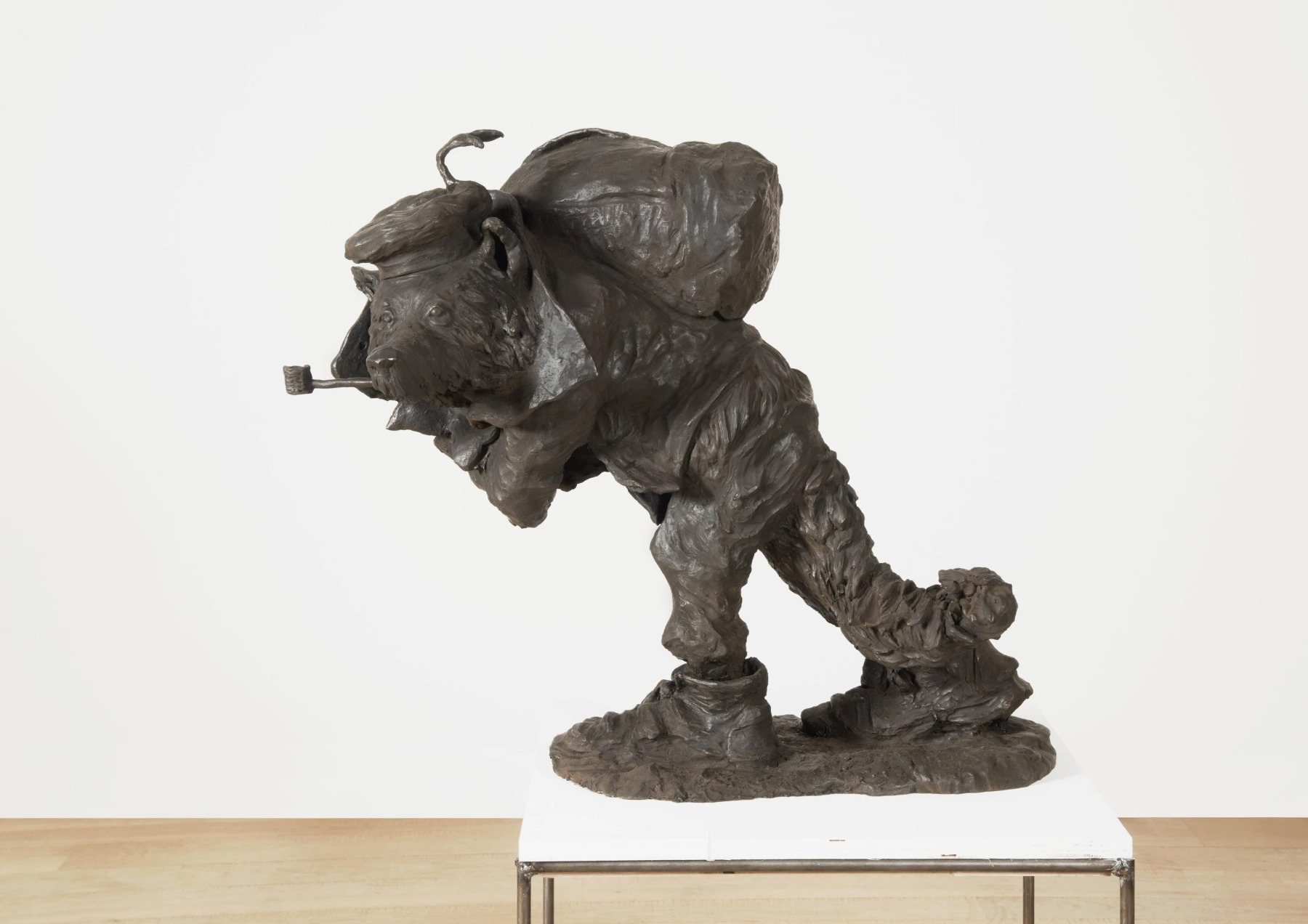
Bells and Cannons. Contemporary Art in the Face of Militarisation
Until 1 March
The international group exhibition ‘Bells and Cannons’ presents different strategies used by contemporary artists in the face of militarisation. Its title refers to the close relationship between art and war. Historically, bells were often recast into cannons and other weaponry during wartime. In other words, from its very inception, the idea of a bell has included the possibility of military use, and both bells and cannons were frequently cast by the same craftspeople. Fittingly, the exhibition employs this metaphor of unexpected congruence to explore the complex relationship between war and culture.
We could include art and culture as part of the contemporary conflict analysis vocabulary, alongside concepts such as soft power, psyop, and hybrid warfare. What connects them is the notion that it can be extremely difficult to distinguish between what belongs to war and what does not. It is equally challenging to determine when and which communication tools, data processing technologies, or energy structures are used for civilian versus military purposes, and for whose benefit. Similarly, decisions relating to climate change, altered landscapes, and historical memory can often appear ambiguous or opaque, like the motives and people behind them.
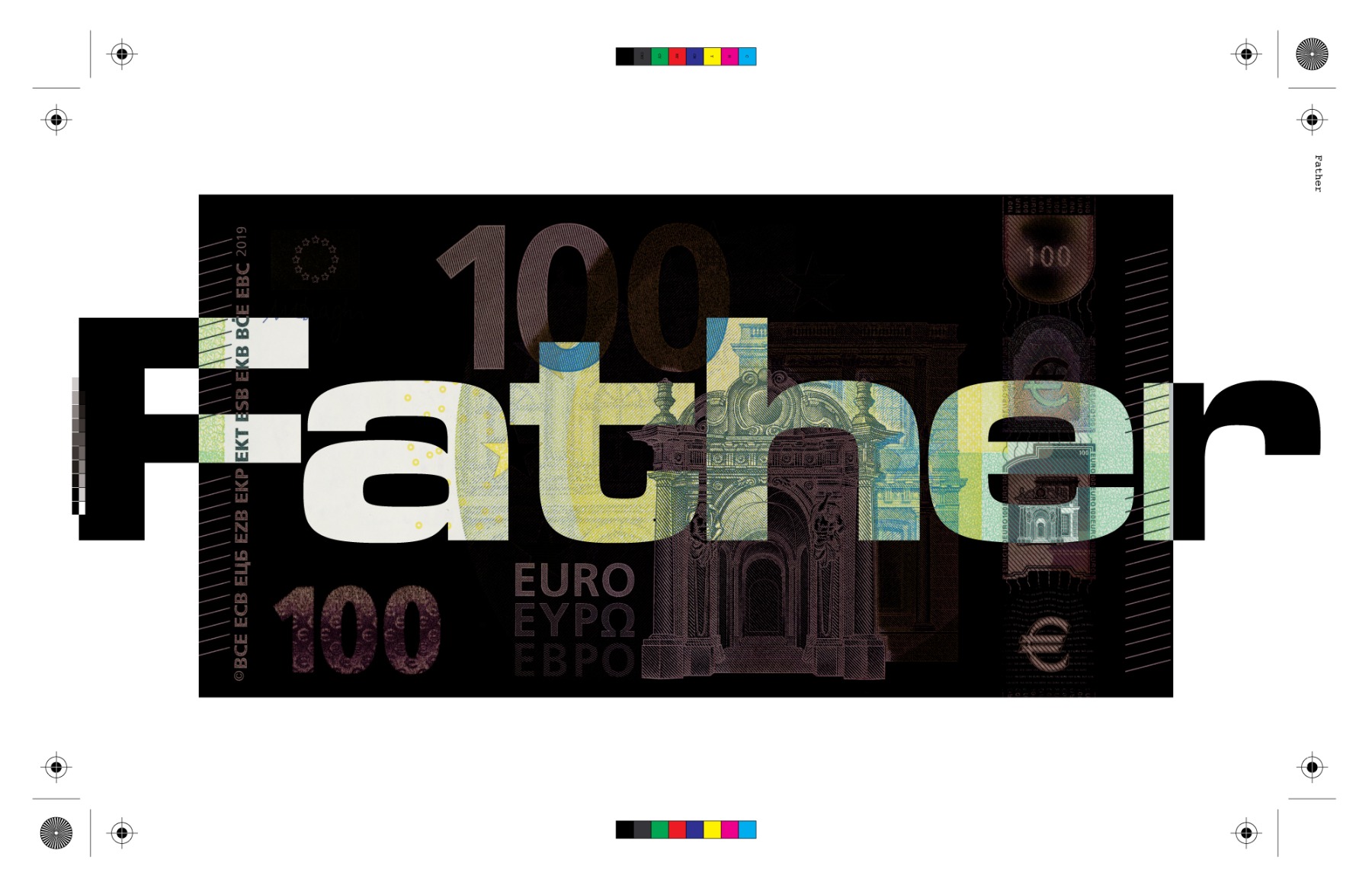
Mykolas Valantinas. Father
Until 1 March
The starting point of ‘Father’, Mykolas Valantinas’ solo exhibition, is the archive of drawings and prints by his father, artist Rytis Valantinas, which the son transforms using artificial intelligence. The filter of new technologies brings to the surface the contradictory dynamics between father and son: a mixture of adoration and a ‘desire’ to appropriate or ‘take over’ the father’s work. The AI-generated images that interpolate the archive are exhibited alongside another essential offshoot of the father’s creative oeuvre – money.
Rytis Valantinas is the author of some of the first banknotes of independent Lithuania – the talonas and litas. He also created a 1000-litas note that never entered circulation. The exhibition presents money in a twofold manner: as a political, cultural and economic symbol – the heritage of an entire nation – and as a family relic, laden with memories and claims of inheritance. The deconstruction of the 1000-litas note into the constituent elements needed for counterfeiting becomes a creative gesture that binds together personal and mythological worlds, exposes the mechanisms of value creation, and blurs the boundaries between original and copy, reality and fiction.
MO Museum

Forever Temporary
10 October – 15 March
The exhibition Forever Temporary is a dialogue between art history and the present, between then and now, between this and that. What does art history reveal about artworks and their viewers when we see it not merely as a succession of styles or eras, but as humanity’s ongoing effort to understand itself in the world? Each period brings its own context and visual language, yet all share a common thread: timeless existential questions around which creativity unfolds. Spanning from the late Middle Ages to contemporary art, the exhibition does not aim to trace the linear development of art history. Instead, it unfolds through thematic sections dedicated to questions that remain essential to human existence, all woven together by the theme of time.
Past, present, and future form the backbone of the exhibition, shaping a narrative about how we interpret our place and actions in the world. How do we define identity? How do we grapple with the inexplicable? How do we love, what do we fear, why do we work, and what do we hope for? Sometimes the answers are shaped by cultural experience – distinct in each era and not always immediately recognizable today. At other times, they are instinctive responses, universal across time.
Sapieha Palace
Oliver Laric. Hermanubis, 2021. SLS Nylon, SLA resin, acrylic paint, aluminium base, 230 × 54,5 × 73.5 cm. Courtesy of the Artist and Tanya Leighton, Berlin, Los Angeles. Photographer: Andrej Vasilenko
Breaking the Joints
Until 31 December
Breaking the Joints is a group exhibition and event programme that considers the status of the body within the history of animation, elaborating on the essential concepts of cartoons, while also examining what these modes of world-building can tell us about our world today. Once relegated to the periphery as a popular art form for children’s entertainment, animation has become integral in all media production, a code through which all images and constructions are composited. At the same time, scholars across and between disciplines are increasingly turning to animation to examine not only social and physical transmutations in our society and our media but also to reconsider material objects and relations through a renewed and speculative understanding of animist, agential, and vitalist principles. As such, animation is not simply a specific historically-bound practice of techniques and conventions for moving images but can be regarded as an epistemology, a way of understanding and relating, that offers new possibilities for socio-political, cultural, and ecological critique and embodied transformation.
With a nod to the Sapieha Palace’s former use as a military hospital and ophthalmology clinic, Breaking the Joints explores animation’s fusion of optics and anatomy, and considers legacies of bodily disfigurement and manipulation. In their works, the exhibited artists draw from and critically deploy animated tropes and techniques to address bodily anxieties and material relationships, media and trauma.
Lin May Saeed, “Cleaner”, 2006. Courtesy: Lin May Saeed Estate; Jacky Strenz, Frankfurt/Main. Copyright: Lin May Saeed Estate. Photo (detail) by Wolfgang Günzel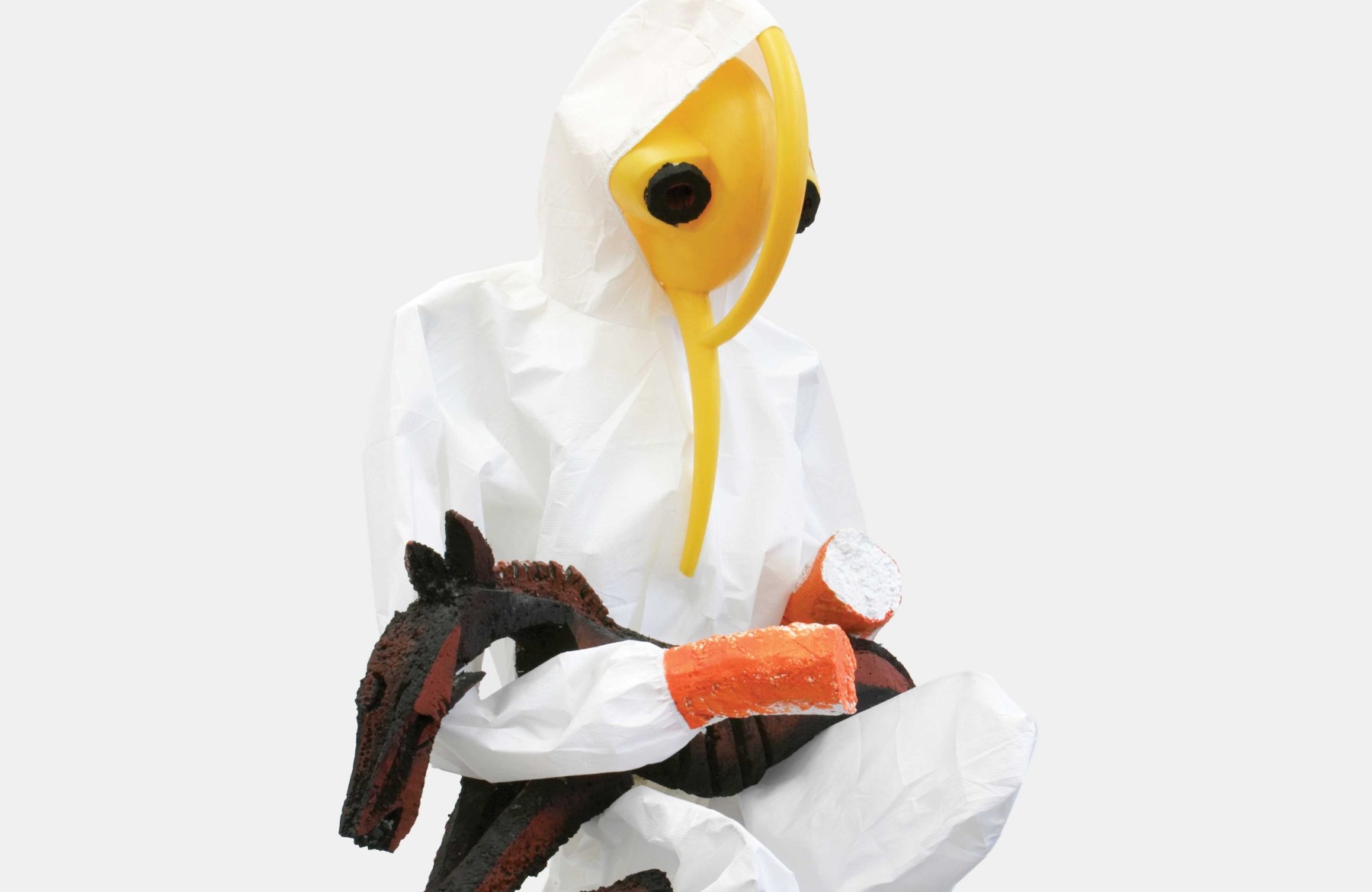
Lin May Saeed. Untouchability
Until 15 December
‘You don’t just touch something once’, observed the German–Iraqi artist and animal rights activist Lin May Saeed (1973–2023). This statement, part of a broader commentary on her creative process, serves both as an enigmatic introduction to Saeed’s exhibition on the 1st Floor Northern Gallery of Sapieha Palace and as a conceptual summary of the works on view – a fragment of her artistic legacy. Saeed’s creative and personal ambition to renounce an anthropocentric relationship with non-human life raises the question of the limits of human possibility and of humanity itself. In her artistic practice, this manifests through sustained and attentive engagement with matter and through a consistent rethinking of the depiction of humans, other animals, and their relationship, drawing on ancient traditions of representation while always imagining a more just future. The sculptures, reliefs, paintings, and drawings in the exhibition embody this idea – emphasising touch as the charged centre of encounter between the works and their viewers.
The senses of most animals are conventionally divided into five faculties – sight, hearing, smell, taste, and touch – yet all of them, not just the last, are grounded in contact: sight arises when a beam of light strikes the retina; hearing begins with the vibration of the eardrum caused by sound waves; smell and taste are triggered when molecules come into contact with their respective receptors. Contact may be considered the foundation of the sensory structure – the condition for any encounter, the threshold that marks the boundary between inside and outside, between the self and the Other.
The National Gallery of Art

Shadows Leave Traces. International Exhibition on the Memory and Imagination of the Northern Landscape
Until 8 February
The North has long been imagined as both a geographical and symbolic frontier. Behind this illusion lie colonial ambitions – often invisible, yet persistently present. Today, the North is increasingly linked to planetary decline and geopolitical tension: the destruction of local cultures, the intensification of resource extraction, and the looming ecological and military threats.The culture of Lithuania and the wider Baltic region bears a distinct imprint of the North. Artists, travellers, naturalists, and thinkers have journeyed to the Arctic, driven by curiosity and a search for identity. At the same time, centuries of Russian imperialist policy involved the inhabitants of our region into the colonization of the North. Particularly painful are the testimonies of Soviet repression – deportations, imprisonments, forced labour, and military service in the Far North.
The exhibition brings together these experiences and stories from the early twentieth century to the present day. Through artworks, archival and documentary materials from Lithuania, Latvia, and Estonia, it reflects not only the history of our region but also that of the North itself. For the first time, this material is presented alongside works by Finnish and Norwegian artists, in which the North emerges not as a symbolic or abstract space, but as a site of belonging, cultural tension, and the preservation of identity. The connections between the Baltic and Northern regions explored in the exhibition invite reflection on embodied environmental experience, imagination, trauma, and (post)memory, viewed through the lens of the Northern – primarily Arctic – landscape. Drawing on the idea of anthropologist Tim Ingold, we propose to see the landscape not as something in front of us or opposed to us, but as something with us. The landscape is not a static image or passive backdrop, but an accumulation of past and present processes – traces of both presence and absence. At the same time, it reminds us that humans are part of a broader biological and cultural fabric.
Vytautas Kasiulis Museum of Art

Tania Mouraud.In Honour of a Reborn Pain
Until 23 November
Born in 1942 in Paris, during World War II, Tania Mouraud is one of the most prominent contemporary French artists. She has dedicated her over-six-decade career to explore the relationships of an individual and society, the situation of a woman-creator, the power of language, the consequences of war, contemporary ecological crises, and collective memory. Her art, embracing multiple media – painting and photography, videoart, sound and text installation, invites the viewer to stop for a deeper contemplation of these complex historical themes.
In the exhibition In Hounour of a Reborn Pain the artist uses as her source the poems written by Avrom Sutzkever, Rivka Basman and Chaim Grade, and by other poets composed in the Vilnius ghetto, to evoke the history of Vilnius. Her text installations that contain words translated into images present the viewer with a task to dig into deep-hidden meanings hinted at by these graphic signs, to uncover and revisit history. A catallogue accompanying the unique event will be presented at the opening of the exhibition.
Pamėnkalnio Gallery
Tadas Truchill. Photo by Elena Krukonytė
Tadas Truchill. SIP, SIS, SIP
14 November – 5 December
A solo exhibition at Pamėnkalnio Gallery is one of the awards granted to the winners of the international event Young Painter Prize. Last year (2024), the competition was won by Tadas Truchill. The exhibition consists of a series of large-format paintings arranged in the form of a foldable altar. Here, painting functions not only as a medium but also as a ritual – a vessel capable of accumulating time and stories. The altar is not presented as a Christian attribute, but as a machine of images and time: a space where the past, present, and trajectories of the future intersect. The artist constructs his own iconography from fragments of art history, personal memory, dream logic, and everyday life. Classical imagery – from Raphael to Velázquez, from mythological sculpture to icons of Lithuanian painting – is absorbed into the painter’s imagined space, where figures begin to dance, dissolve, turn into whirlwinds or ripples of water. Nothing remains still: bodies exist in a state of constant transformation, while images keep layering and recreating themselves.
In Truchill’s work, the act of painting becomes an attempt to bridge different dimensions of time. Reflections, moonlight on the surface of water, and other metaphors of doubling evoke the sense that reality exists across multiple planes at once – visible and experienced, open and concealed. The masculine and the feminine, the sacred and the mundane, beauty and brutality coexist like two energies threaded into a single body – the “altar”. The painting becomes architecture: it carries memories, experiences, tension, visions, and pain. The mythological figure of Atlas transforming into a self-portrait attests to the burden carried by the contemporary Atlas-artist – the weight of the image being created, the fractured marble of reality, the collapsing vault of the world. Painting becomes a practice of endurance, and a state of sacredness.
Medūza

Anna-Sophie Berger. The 60s
Until 29 November
The 60s is Anna-Sophie Berger’s first solo exhibition in Lithuania and the Baltics, featuring a newly commissioned body of work. The show builds on Berger’s recent investigations into the conceptual, social, and aesthetic dimensions of fashion design, and how the contradictions inherent therein shape contemporary perception. This line of inquiry has become a recurring and widely recognized motif in her artistic practice, articulated in exhibitions such as Something for Everyone, Everything for No One in collaboration with Teak Ramos (International Library of Fashion Research, Oslo, 2025), The Years (MAK Geymüllerschlössel, 2023), Mode und Tod (Galerie Emanuel Layr, 2023), and Wealth and Propriety (Lodos Gallery, Mexico City, 2022).
On this occasion, The 60s is framed by two apparently distinct sets of archival images. The first comprises functional, decidedly non-fashion-oriented designs in drawings, sketches, and textile patterns by members of the Artists’ Association’s Soviet-era textile section, spanning the late 1960s to the late 1980s. The second consists of photographs scanned from a polaroid album assembled by the artist’s grandmother as a gift to her father. Taken in the 1960s, they depict clients of the family’s jewelry factory in Austria, seated in the showroom while selecting seasonal styles and placing orders. The apparent distance between these two sets of images is contradicted by an implied narrative of shifting aesthetic codes, shaped by large-scale geopolitical transformations and their effects on lived material conditions. The closure of the “Berla” factory in 2005, prompted in part by the EU’s expansion and the influx of cheaper labor from the member states, parallels how the standardized, uniform codes rehearsed by mid-century designers in Lithuania gradually gave way to Western trends.
LITHUANIA, Kaunas

15th Kaunas Biennial, Life After Life
Until 23 November
Curator of the 15th Kaunas Biennial, Adomas Narkevičius: “With the 15th Kaunas Biennial, Life After Life, I sought to bring together artists, artistic practices and a curatorial approach that either reflect or work through the conditions and moods of transition and uncertainty, in ways that remain unresolved or unstable themselves. This edition centres on temporal and emotional states that recur, stall or resist closure: a moment that feels like an endless present looping back on itself, or an after end-of-history interlude. What, if anything, is shifting remains arguably unclear.
In Life After Life, I think of biennial-making as an adaptable form, at times strained, overwhelmed or out of step. I wanted to provide audiences with an exhibition that shifts in scale, tempo and tone, treating tensions and dissonances as method. The exhibition unfolds against a backdrop of algorithmic decision-making, fractured trust and attention, faltering “rules-based order” and contemporary art’s increasingly antiquated role as a democratising product. I hope Life After Life moves between the structural and affective registers, tracing how conditions like anticipation, control, shame and inertia take on aesthetic form”.
More info >>
Upper image: Ed Atkins. Even Pricks, 2013. HD video, 5.1 surround sound, duration – 8’. Photographer: Andrej Vasilenko. From "Breaking the Joints" exhibition at the Sapieha Palace, Vilnius

